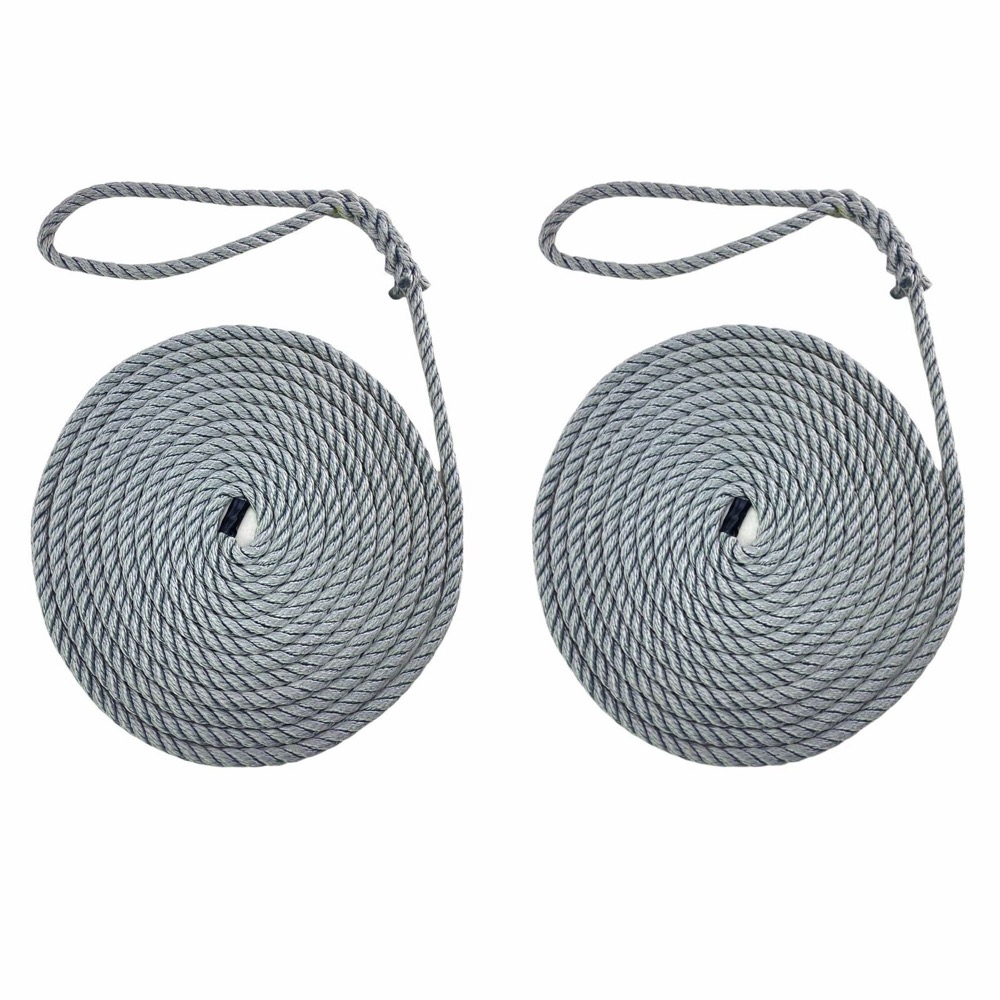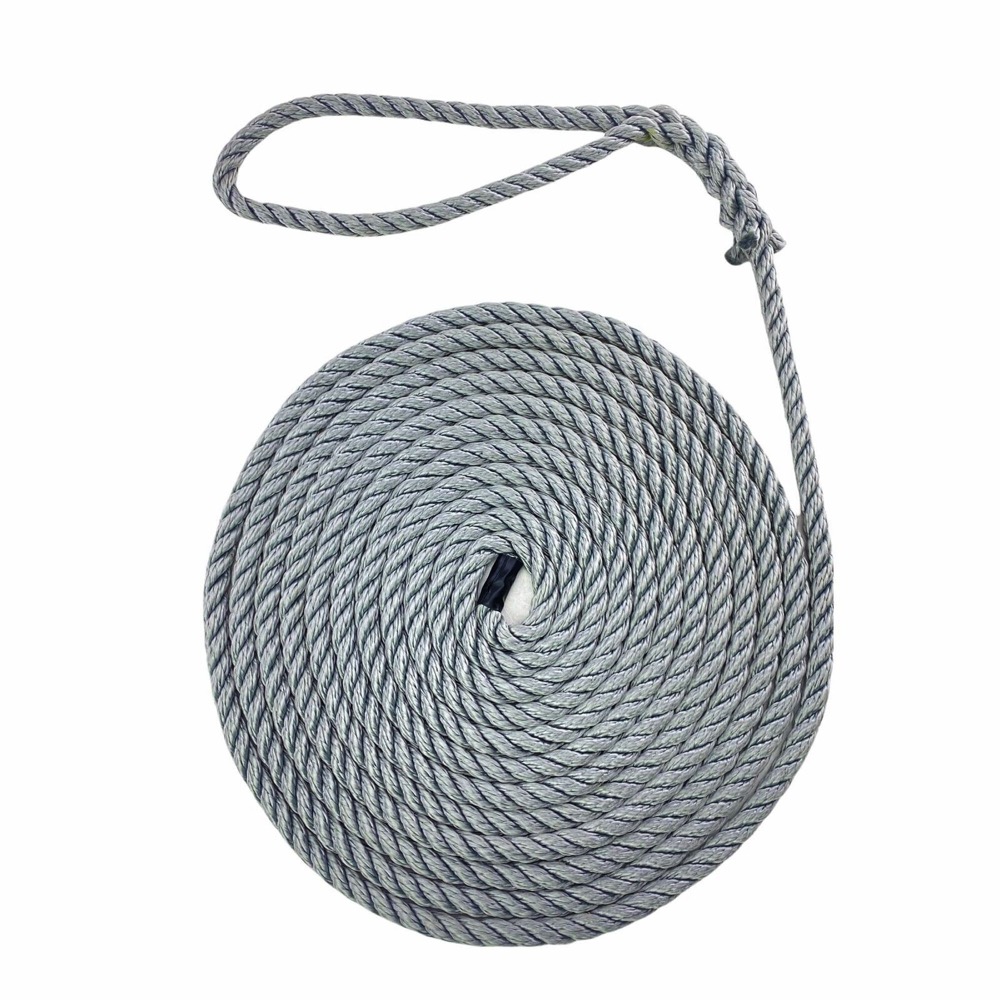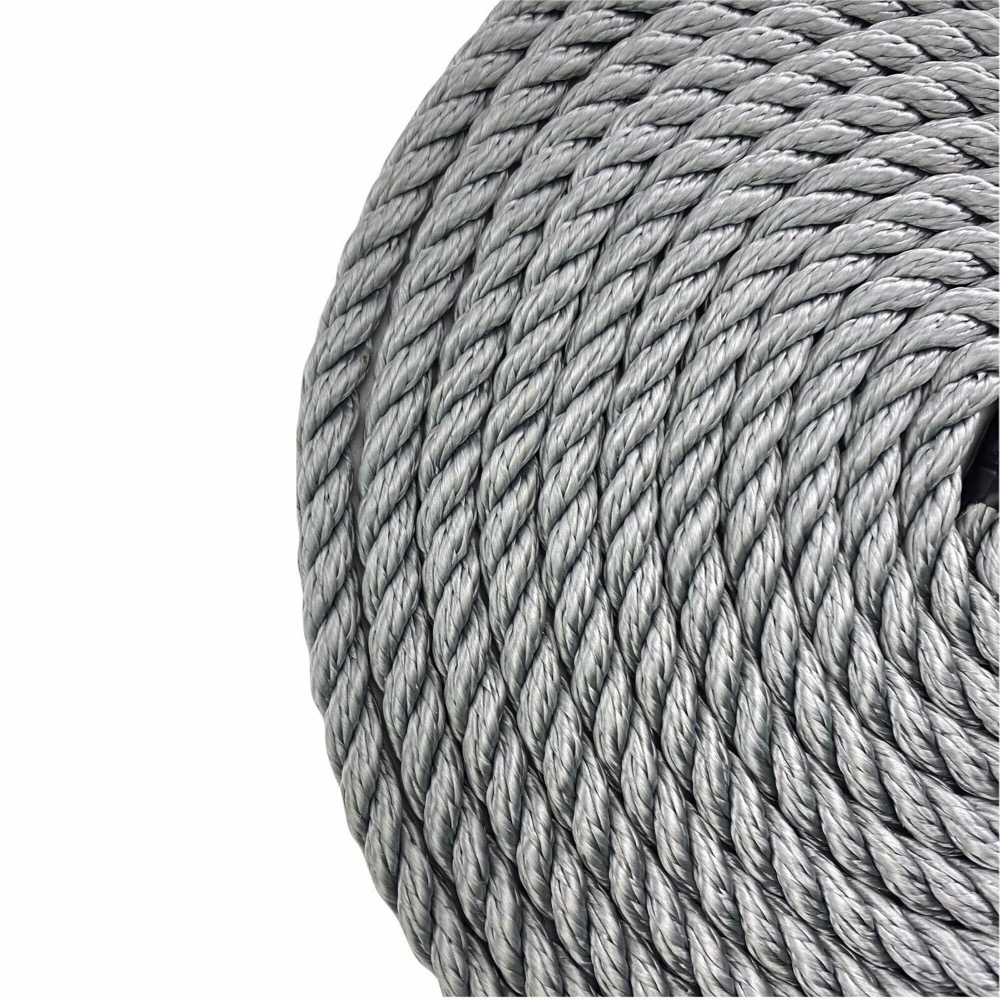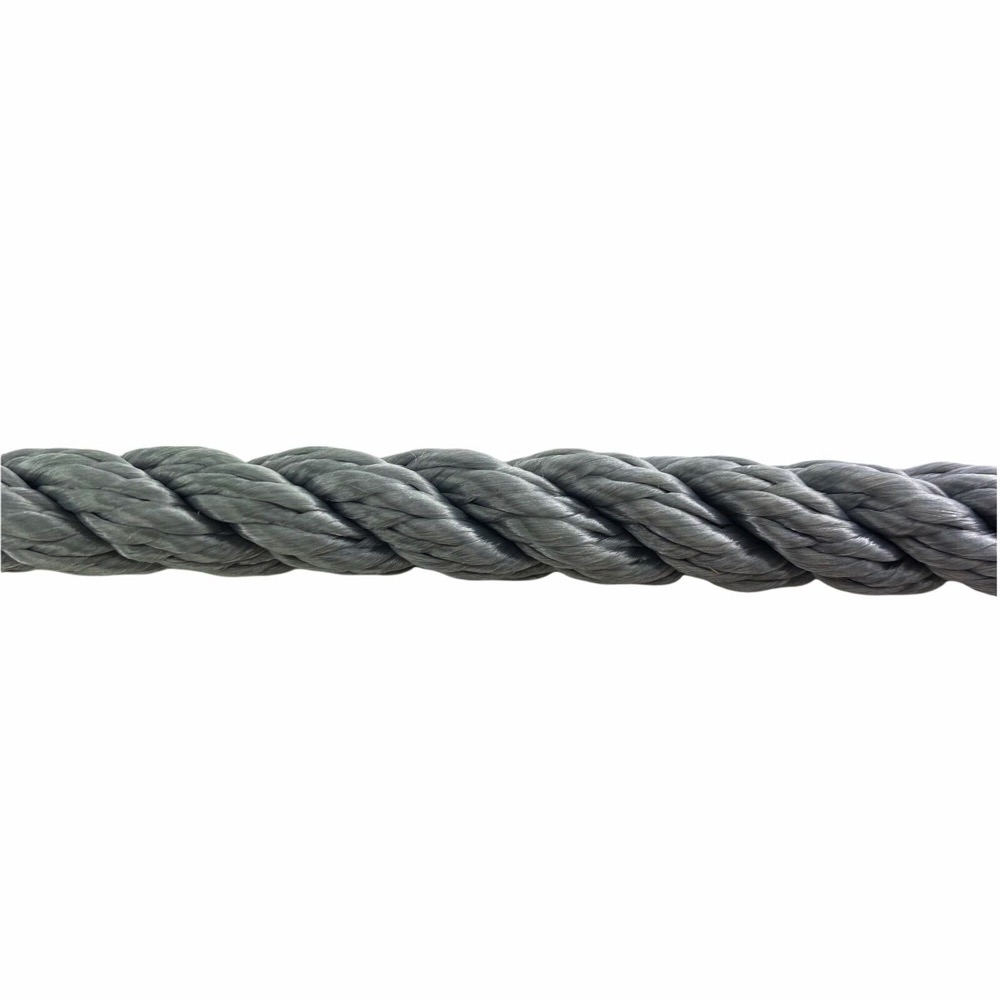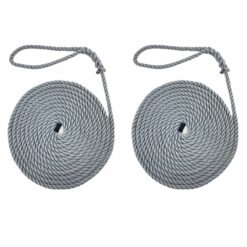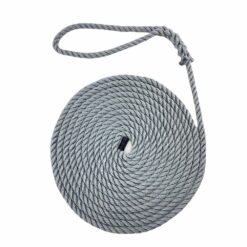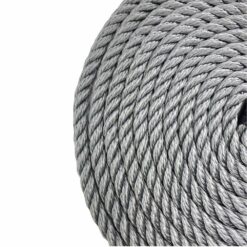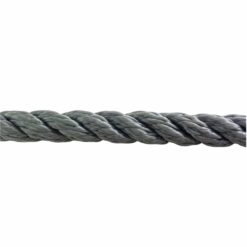2 x 16mm Grey Softline Mooring Ropes x 10 Metres
£48.00
16mm Grey Softline Multifilament Mooring Ropes 2 x 10 Metres
Softline multifilament rope is one of the most popular used ropes for moorings. This type of rope is very soft to handle and has high stretch characteristics, making it ideal for absorbing shock loads.
Approximate Break Load (Prior to splice) 3800 Kg’s
Rope Properties:
• Water Resistant, floats on water & zero absorption
• High Strength & abrasion resistance
• Soft To Handle
• Excellent Knotability
• Resistant to UV Radiation
• Resistant in chemically active environments
• Excellent insulation capacity
RopeServices UK offers Softline multifilament rope in 3 strand only.
We offer these ropes in diameters from 6mm up to 24mm.
All Mooring Ropes are manufactured to order, so if you require longer/shorter lengths, larger/smaller soft eyes, galvanised thimbles / stainless steel thimbles, protection on rope, then please call us for a quote.
RopeServices UK have the ability to manufacture all of our ropes to your requirements.



